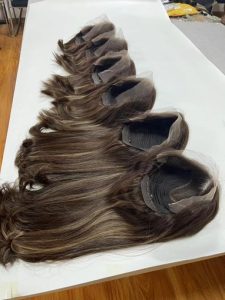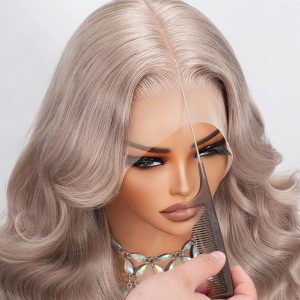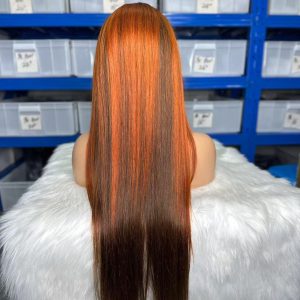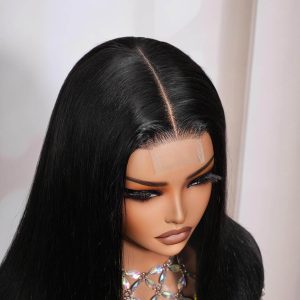Introduction
Wigs have been used for centuries across cultures, religions, and performing arts.
Today, they serve both as a symbol of faith and as an essential tool for performers on stage.
In this article, we’ll explore the significance of wigs in religious traditions and their importance in theatrical and performance settings, along with care tips and buying guidance.
Section 1: Religious Wig Use
 1.1 Jewish Kosher Wigs (Sheitels)
1.1 Jewish Kosher Wigs (Sheitels)
- Meaning: In Orthodox Judaism, married women wear wigs (Sheitels) for modesty.
- Style Options: Natural human hair, lace top, or full lace designs.
- Key Features: Comfortable caps, breathable lace, and natural hairlines.
1.2 Christian & Catholic Use
-
Some women wear wigs during worship or missionary work, often for modesty or health-related reasons.
1.3 Other Faith Practices
-
In some faiths, wigs are worn as a symbol of humility or to cover natural hair during religious ceremonies.
Section 2: Stage Wig Use
2.1 Theater Wigs
- Used to transform actors into historical or fictional characters.
- Custom-colored, styled, and fitted for each role.
2.2 Concerts & Musicals
-
Singers and dancers wear wigs for quick changes, volume, and durability under stage lights.
2.3 Drag & Performance Art
-
Wigs are central to creating bold, artistic, and dramatic stage looks.
Section 3: Choosing the Right Wig
- Material: Human hair wigs look the most natural, while synthetic wigs are lightweight and cost-effective.
- Cap Construction: Lace front for realism, machine-made for durability.
- Occasion: Religious use prioritizes modesty and naturalness; stage wigs focus on drama and transformation.
Section 4: Wig Care Tips
-
Wash gently with sulfate-free shampoo.
-
Air dry on a wig stand to keep shape.
-
Store properly in silk/satin bags or stands.
-
Avoid heat damage with protectant sprays.
-
Detangle carefully with a wide-tooth comb.
Section 5: FAQ
Q1: What makes a wig “Kosher”?
A wig is considered Kosher if it meets religious standards, typically made from human hair, with modest and natural-looking styles.
Q2: Can stage wigs be reused for daily wear?
Yes, but stage wigs are often heavily styled, so they may not feel as natural for everyday use.
Q3: Which wig type lasts longer: religious wigs or stage wigs?
Religious wigs, especially Sheitels, are designed for daily wear and often last longer than stage wigs, which undergo heavy styling.
Q4: How often should I wash my wig?
Generally, every 7–10 wears, but it depends on styling products and frequency of use.
Q5: Are synthetic wigs acceptable for religious use?
In some traditions, yes, but most Kosher wigs are human hair for a natural and modest look.
✨ Ready to try it yourself? Explore our [Kosher Wig] and find the perfect match for your style.



